Cape Town – South Africa is on track to become a manufacturer of locomotives for the rest of Africa, Transnet chief executive Brian Molefe said today.
Briefing the Portfolio Committee on Economic Development on the parastatal’s R300 billion market demand strategy, Molefe said the R4 billion that Transnet planned to spend over the next seven years on research and development in rail and ports equipment would help develop a locally driven manufacturing industry.
He said the parastatal has targeted to purchase 62% of their goods and services required for its new infrastructure projects, locally.
Already 62% of the content of the 141 locomotives bought from General Electric has been
spent on local content, he said, adding that South Africa already manufactured and exported wheel parts for locomotives.
Transnet employees had recently undergone training in the US, said Molefe.
Over the next seven years, Transnet would acquire 1 317 locomotives and would manufacture 25 000 wagons in South Africa, to be used to ship cars and minerals, said Siyabonga Gama, chief executive of Transnet Freight Rail.
Detailing Transnet’s market demand strategy, Molefe said the parastatal had invested R118 billion in infrastructure in the last seven years, but would almost triple this to R300 billion in the next seven years.
The paratatal will also expand the tonnage of iron ore and coal for export transported, from 53 tons to 83 tons and 59 million tons to 74 million tons, respectively, while moving the number of containers handled from 4.3 million to 7.6 million.
Molefe said last year Transnet invested R24.6 billion, as part of the R300 billion programme, and would this year invest R31.2 billion, with investments peaking at R56.3 billion in 2016/17.
A total of R4.2 billion will be spent on small business promotion over the next seven years and the parastatal was working with suppliers to meet the government’s transformation and empowerment objectives, he said.
About 99 000 jobs are expected to be created in current financial year, peaking at 136 000 in the 2016/17 year, and totalling about 588 000 jobs over the next seven years.
The majority of jobs will be created in KwaZulu-Natal, backed by developments in the Port of Durban (the biggest port in Africa), where R38.5 billion will be spent and Richards Bay (the biggest coal terminal in Africa and the Middle East) where R49.9 billion will be spent.
A total of R3.9 billion will be invested in expanding the container capacity at the Cape Town harbour, while the Ngqura Container Terminal at the Port of Ngqura, near Port Elizabeth, will also be expanded, by adding four container berths.
Transnet’s other major programmes include increasing rail capacity to meet market demand, increasing the export of coal, iron ore and manganese and the completion of a new multi-product pipeline.
Molefe said about 58% of the R300 billion infrastructure spend would got towards new infrastructure and new rail and locomotives, while among Transnet’s divisions, general freight and freight rail would get over half of investments or R151 billion.
The investments in rail and freight include, updating a line from Sishen to Port Elizabeth as part of the R25.9 billion to be spent on a South Corridor linking the Eastern Cape to the rest of the country.
The line is necessary for South Africa to increase manganese production, particularly as the country has 80% of manganese reserves but only 20% of market share.
The rail line from Sishen to the Port of Ngqura, near Port Elizabeth, would be routed from Sishen to Kimberley, where the existing Cape Town-Johannesburg line would link it to De Aar, where it would then route to Port of Ngqura, via Cradock and Alicedale.
The 232km stretch of line between Kimberly and De Aar would be doubled.
A further R28.6 billion will be spent updating the railway line between Sishen and Saldanha, while a proposed 146km new line between Lothair via Nerston to Sidvokodvo would help link Gauteng to Richards Bay through Swaziland.
Existing rail networks in the Waterberg region – which contained 40% of the country’s coal reserves – would also be upgraded.
Molefe said the new 555km-long, 24-inch thick, multi-product pipeline, which will replace the existing Durban to Johannesburg Pipeline, was on track to be completed by the end of next year.
The new pipeline will increase nearly double capacity from 4.4 billion litres to 8.4 billion litres.
The trunk line between Durban and Jameson Park was commissioned in January, and 348 million litres of diesel had been transport through the pipeline between January and March.
Three 16-inch pipelines in the northern network were commissioned last year and up to March this year, 1.2 billion litres of product had been transported through the pipeline.
Molefe said other countries were already approaching South Africa to learn from the mistakes Transnet had made in rolling out the pipeline.
These mistakes include the cost of the pipeline more than doubling, environmental hitches when frogs were found in swamps and mountain rocks, which meant engineers had to expand the circumference of the pipe.
Molefe said 70% of capital investment would be funded from operating cashflows, with the remainder to be raised on the domestic market.
This would mean it would have to borrow R14.1 billion this year — which would peak at R20.5 billion — it would need to borrow in 2015/16, before cashflow turns positive in 2018/19 and returned R7.1 billion.
Molefe said one of the biggest risks going forward for Transnet’s infrastructure programme, was the financial situation in Europe, which could affect borrowing from capital markets. – BuaNews




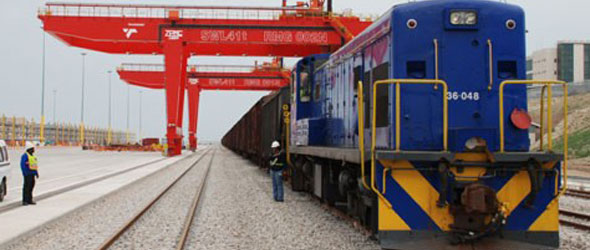
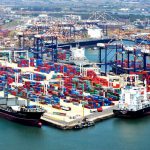
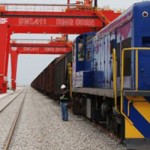
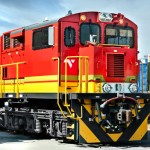




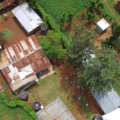
Speak Your Mind